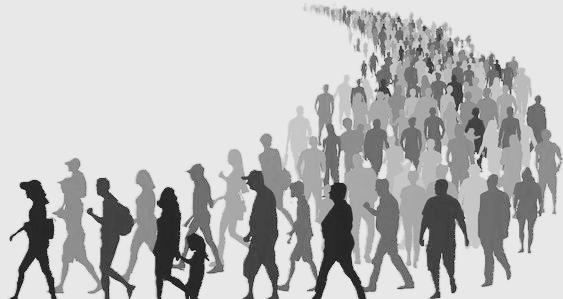
Humanizing Cities







Can the design of urban space promote cohesion and healthier lifestyles ?????

“Tell
me where you live, and
I’ll
tell you who you are”
Living together has been challenged as a concept and as a reality. How we spend time at home, on the street, and in the city. How we re-calibrate urban centers where people can live, work and transact.
Designing cities with a human-centric approach is essential for creating vibrant, livable communities. This involves prioritizing the needs and experiences of residents, fostering a sense of belonging, and promoting overall well-being.



Today, more than half of the global population lives in cities, a number that is expected to rise to two thirds by 2050, according to the United Nations Population Fund
Rapid urbanization comes with challenges. But many cities like see this as an opportunity, not a threat ....


Cities born thousands of years ago they connected us and pushed humanity forward, but they also divided us from nature from each other from ourselves

THEY FORGOT ABOUT PEOPLE , AND WE FORGOT WHAT’S IMPORTANT
its time to REMEMBER
its time to redefine our relationship with nature
to reimagine what a city is
without cars and roads
without smog or noise
its time to rethink communities
so that we can connect and create way we were meant to
its time to

its time to draw THE LINE


What is the line ???
A cognitive city stretching across 170 kilometers, from the epic mountains of NEOM across inspirational desert valleys to the beautiful Red Sea.
A mirrored architectural masterpiece towering 500 meters above sea level, but a land-saving 200 meters wide. THE LINE redefines the concept of urban development and what cities of the future will look like.


A city without cars or even streets 1.
What if we removed cars ??
What if we got rid of streets ??
zero-car environment is part of a 100% sustainable transport system –with zero pollution and zero wait time. Reduced commutes will create more time for leisure. Not paying for expenses like car insurance, fuel and parking will mean higher disposable incomes for citizens.

The city is going to be structured on 3 different layers:

1.Pedestrian layer no roads no cars a lot of parks and trees to encourage walking
2.services layer with shops and another commercial spaces

3.spine layer transportation with an ultra high speed transit system


2. A city where everything is a five minute walk away

What if all daily needs will be met within five minute walking distance ?? All daily essentials will be accessible within a five-minute walk and an efficient public transport network will offer a rapid end-to-end journey. Automated services will be powered by artificial intelligence. Amenities in close proximity will mean residents see family and friends often through spontaneous encounters

3. A fully sustainable city
What if sustainability is not a goal but a given ??
The city's commitment to environmental responsibility and green initiatives ensures that residents can enjoy a high quality of life while minimizing their ecological footprint. vertical garden city will mean you are always only two mins from nature. the spine connects city modules






